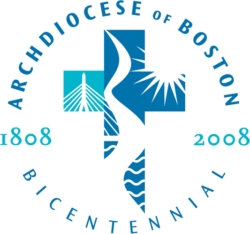Two hundred years of faith and service
Fragile beginnings
Within 20 years of its foundation in 1789 the diocese of Baltimore had grown both beyond expectations and beyond the capacity of a single bishop to govern. There were hints earlier when its first bishop, John Carroll had sought and obtained the assistance of a coadjutor bishop. The first, Bishop-elect Dominic Laurence Graessl, was appointed in January 1794. He, however, died before the document appointing him arrived from Rome. With his death Bishop Carroll sought a replacement in the person of Father Leonard Neale who was appointed as Bishop Carroll’s assistant on April 17, 1795. Another delay in the delivery of documents held up Bishop-elect Neale’s episcopal ordination until Dec. 7, 1800.
The first episcopal see in the United States had been founded at Baltimore and its first bishop, Bishop John Carroll, had the pastoral care of the entire territory, east of the Mississippi River saving the territory that eventually would be Florida and southern Alabama.
Intending to send the new bishop to Philadelphia to parcel out, geographically, his enormous pastoral responsibilities, Bishop Carroll was again stymied when he was forced to appoint Father Neale as president of the nascent Georgetown College in 1799. He remained in that position even after he had been ordained a bishop. The college was returned to the Society of Jesus in 1806 following the restoration of the Jesuits.
With Bishop Neale’s episcopal ordination and the return of the Jesuits, Bishop Carroll finally had some full-time assistance in governing the vast territory with its rather miniscule flock scattered across recently formed states and newly acquired territories.
The Catholic population was largest in Maryland followed by what can be best described as pockets of Catholics in the major East Coast cities of Philadelphia and New York. To a lesser extent there were Catholic communities in Boston and interestingly in the southern ports of Charleston and Savannah. Larger Catholic settlements had been made in New Orleans, but it had been created its own diocese before it was part of the United States in virtue of the Louisiana Purchase.
Maryland Catholics had been among some of the first to “go west” and stopped in Bardstown, Kentucky and formed what would eventually become a virtual Catholic Holy Land a few miles south of Louisville.
There had been hints both by Bishop Carroll and by authorities in Rome that the snail’s pace growth of the Catholic communities in the new nation might well pick up speed. The Holy See foresaw and warned Bishop Carroll as early as the time of Bishop-elect Graessl’s appointment in 1794 that the time might come when the vast territory of the diocese would need to be divided into other sees “even should the incumbent object.”
That time came, though not with any objection from the incumbent, on April 8, 1808 when Pope Pius VII with the papal bull Ex debito pastoralis decreed the creation of four new dioceses for the United States and the elevation of the premier see of Baltimore to metropolitan status.
Subsequent documents appointed the bishops of the new sees which were to be located in New York -- whose territory would be the state of New York and the northern half of New Jersey; the second announced was Philadelphia, which would serve all of Pennsylvania and Delaware and the southern half of New Jersey. The third and fourth sees would respectively be Boston with the states of New Hampshire, Massachusetts, Rhode Island, Connecticut and Vermont, [the territory that would become the state of Maine in 1820 was at this time part of Massachusetts]; and Bardstown which would serve the territory now constituting Kentucky, Indiana, Illinois, Michigan, Tennessee, Ohio, and Wisconsin.
The new archdiocese of Baltimore would be left with Maryland, Alabama, Georgia, Mississippi, North and South Carolina, and Virginia (which then included West Virginia).
Some questioned the wisdom of creating a see at Boston because of the tiny Catholic population and the dearth of priests. Not that Catholicism had not been seen or heard about in the territory of the new diocese. Jesuit missionaries had made notable accomplishments in Maine. New England’s proto- martyr, Father Sebastian Rale, SJ, literally lost his scalp and life serving the area’s first indigenous peoples.
Fear of papists and especially of Jesuits led to the enactment on the anti-priest laws in the Bay Colony in 1647. We know that it was enforced because when a certain Father Gabriel Druillettes, SJ, came to Boston to discuss trade proposals between Canada and the then English colony, he was admitted by way of an exception or “dispensation.” The law was renewed in 1700. New England and Boston, in particular, were not “welcoming” venues for Roman Catholics and especially not for priests.
That this hostility, not so veiled at many points, continued to the time of the American Revolution is clear because while in Boston during the fight for independence, General George Washington decried the outright bigotry of the locals and some of his troops celebrating Guy Fawkes Day -- when it was custom to burn an effigy of the pope among other acts which he found resentful. While the future president acted out of a personal distaste for such acts, he also had in mind the negative effect of such performances on the morale of some of his troops -- not a few of who were Catholics from France and Ireland.
Coming next:
Early leadership
This is the first of occasional articles in a series about the history of the archdiocese which celebrated its bicentennial on April 8, 2008.



















